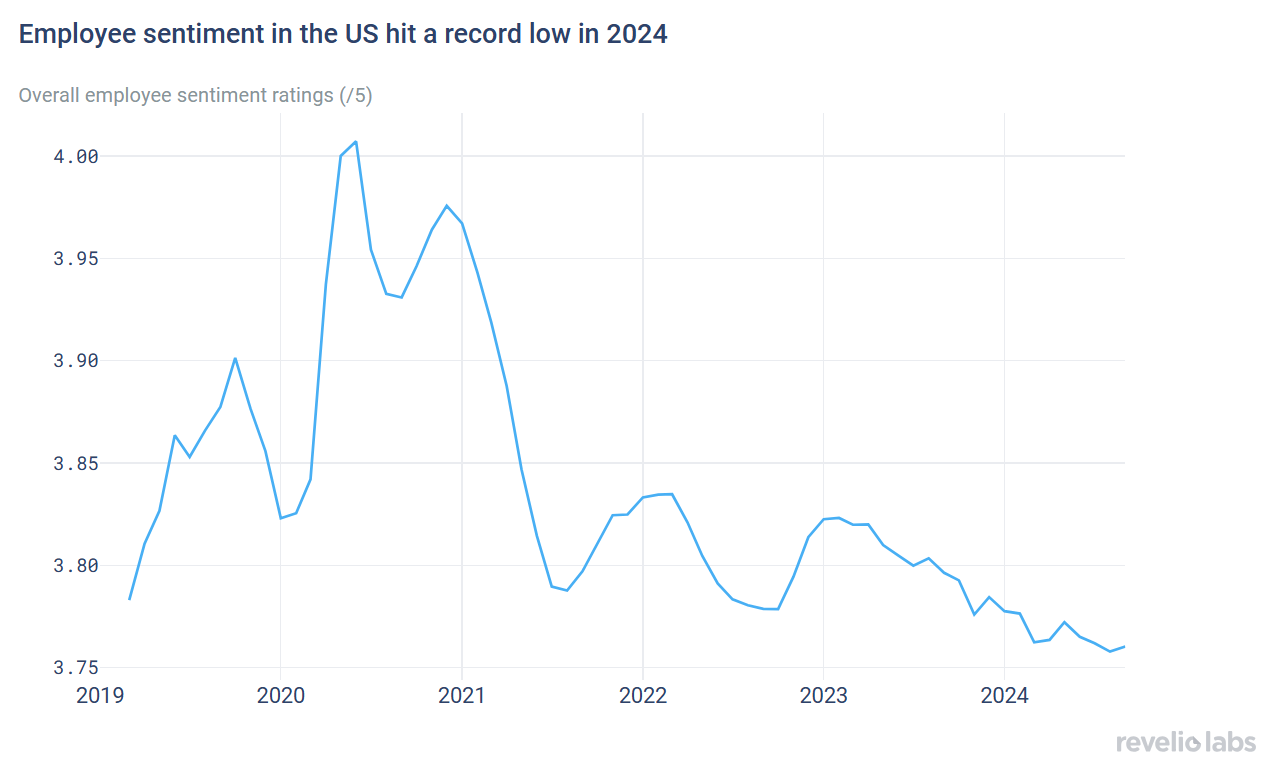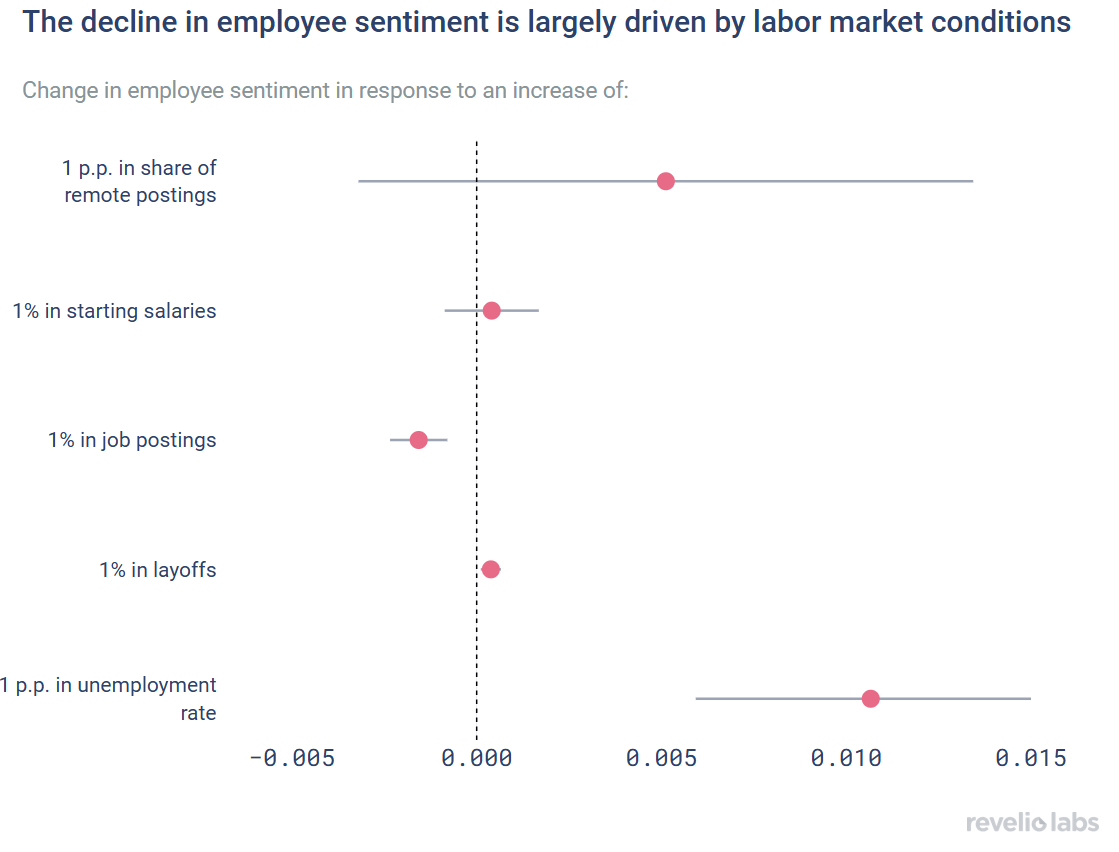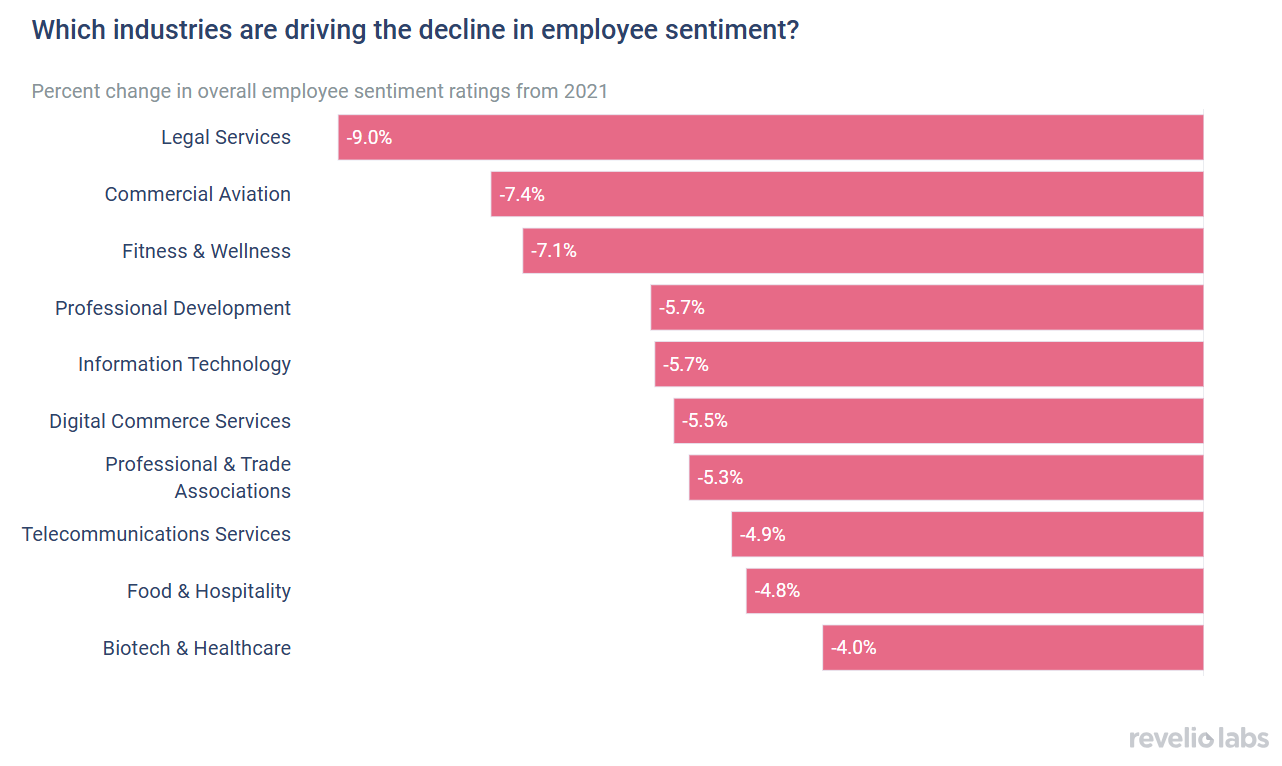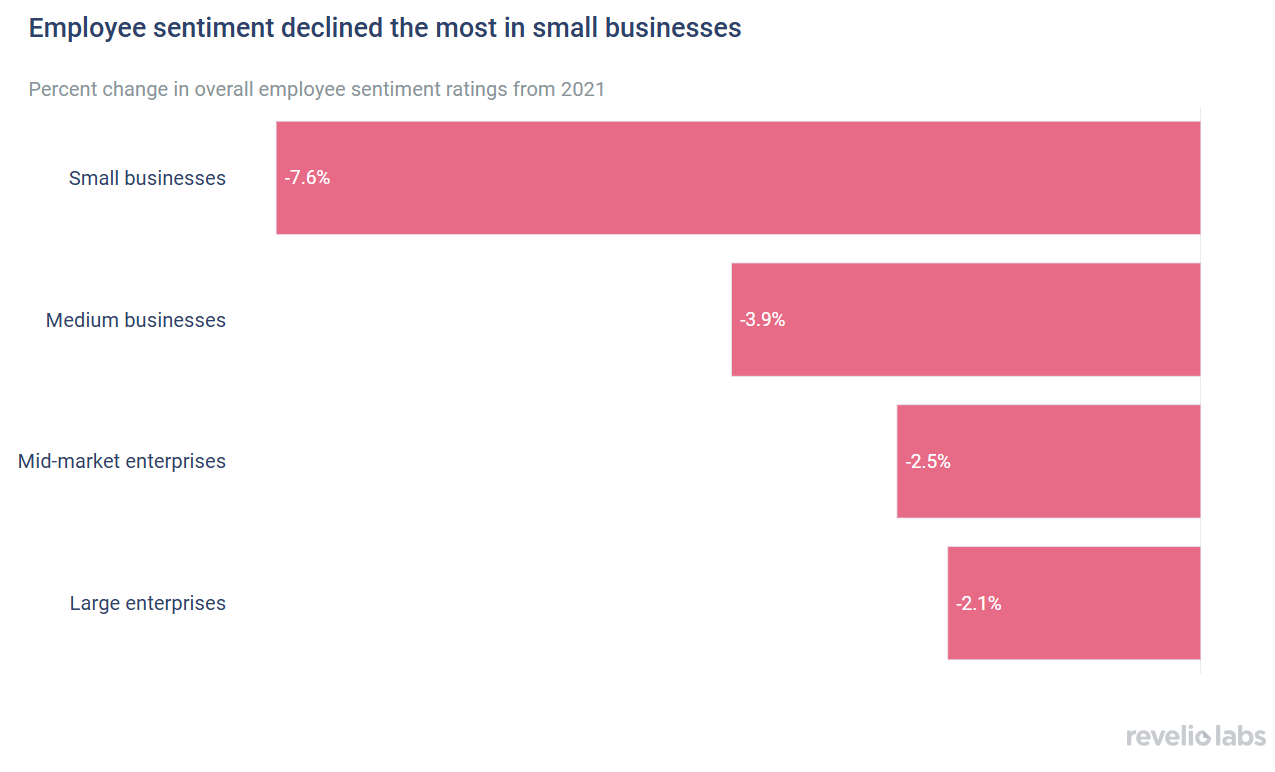Unpacking the Workplace Blues
Why is employee sentiment in free fall

Employee sentiment in the US has reached a record low in 2024, with more employees reporting heightened stress, burnout, and dissatisfaction with work-life balance.
Employee sentiment is highly correlated with macroeconomic sentiment measures, such as consumer confidence and inflation expectations. In addition, over 80% of the decline in employee sentiment since 2021 can be explained by overall labor market conditions, including unemployment, layoffs, and job postings.
The decline in employee sentiment is not uniform across industries and companies. Employee sentiment has declined the most in the Legal Service and Commercial Aviation industries. Moreover, small-sized companies have experienced the largest drop in sentiment.
Employee sentiment is a key indicator of the overall health of an organization. How employees feel about their work environment, management, and job satisfaction directly impacts productivity, engagement, and retention. We have previously shown that employee sentiment can forecast major events in different companies, such as mass layoffs and mass exodus from crypto companies ahead of the crypto collapse. Understanding and addressing employee sentiment is critical for fostering a thriving workplace.
Overall employee sentiment in the US has been declining consistently since mid-2021 and reached a record low in 2024, reflecting broader shifts in the workplace landscape. More and more employees have reported heightened stress, burnout, and dissatisfaction with work-life balance, all of which have contributed to a decline in overall morale. As we have previously shown, this decline in employee sentiment coincides with the Great Stay, as the levels of attrition across all industries have plummeted to a decade-long low. Revelio Labs’ data shows that this decline in employee sentiment spans across all categories. This week, we explore the reasons behind the ongoing decline in employee sentiment.


Sign up for our newsletter
Our weekly data driven newsletter provides in-depth analysis of workforce trends and news, delivered straight to your inbox!
The decline in employee sentiment is related to workers’ overall feelings about the economy. We find a strong correlation between employee sentiment and macroeconomic confidence measures such as consumer sentiment and inflation expectations. Employee sentiment is positively correlated with consumer sentiment and negatively correlated with inflation expectations. As employee sentiment wanes, it mirrors broader economic concerns, indicating that how employees feel about their jobs and future prospects is closely tied to consumer outlooks and expectations about rising prices. This connection highlights the importance of monitoring employee sentiment as an indicator of economic health.


What factors contribute to the decline in worker sentiment? A significant portion can be attributed to shifts in labor market conditions, including unemployment, layoffs, wages, and the availability of alternative job opportunities. Our regression analysis of employee sentiment on these labor market factors, while accounting for time trends, reveals that these forces explain roughly 80% of the drop in sentiment from 2021 to 2024. Employee sentiment tends to rise alongside increases in unemployment or layoffs. High levels of layoffs and unemployment seems to have a psychological effect on workers, leading them to appreciate their jobs more and rating their satisfaction higher. Conversely, sentiment declines as the number of job postings rises. A rise in available jobs gives workers the impression that they have more outside options, leading them to become more critical of their current jobs.


The decline in employee sentiment hasn't been uniform across all industries. For example, industries like Legal Services and Commercial Aviation have experienced a significant drop in sentiment since 2021. In the Legal Services industry, the rapid adoption of AI is likely a contributing factor, as many workers perceive it as a threat to job security. In Commercial Aviation, disruptions caused by the COVID-19 pandemic, coupled with shortages of pilots and air traffic controllers, have contributed to the decline in sentiment. Interestingly, other industries, such as Business Services and Consumer Technology, have actually seen an improvement in employee sentiment ratings compared to 2021.


The decline in employee sentiment also varies by company size. Since 2021, employees at small companies have experienced the largest drop in sentiment compared to those at medium or large companies. This significant decline can be attributed to several factors, including limited resources and support, fewer opportunities for career advancement, and a lack of job stability, as small businesses are more vulnerable to economic downturns and market fluctuations. Additionally, employees in smaller organizations often face overwork and role ambiguity, as they are required to juggle multiple responsibilities, leading to increased stress and burnout.


The persistent decline in employee sentiment in the US reflects deeper economic concerns and shifts in labor market dynamics. Our analysis suggests that macroeconomic conditions significantly impact employee sentiment, but these effects vary greatly by industry and company-specific characteristics. Understanding factors that affect employee sentiment provides valuable insights into how companies can address the employee sentiment crisis. Key strategies include improving work-life balance, offering clearer career development opportunities, fostering a supportive work environment, and providing non-monetary benefits such as flexible work schedules, personalized support, and mental health benefits. By addressing these areas, organizations can enhance employee sentiment, leading to improved productivity and retention.


